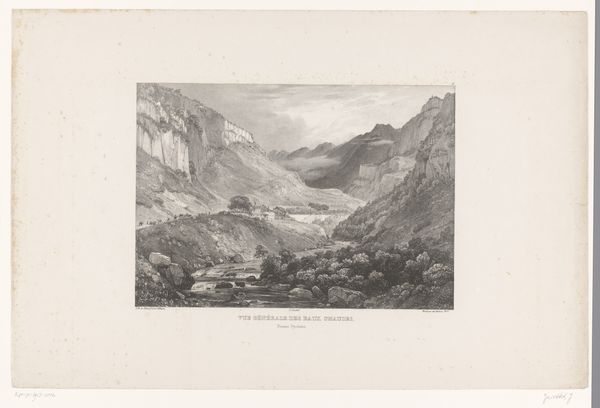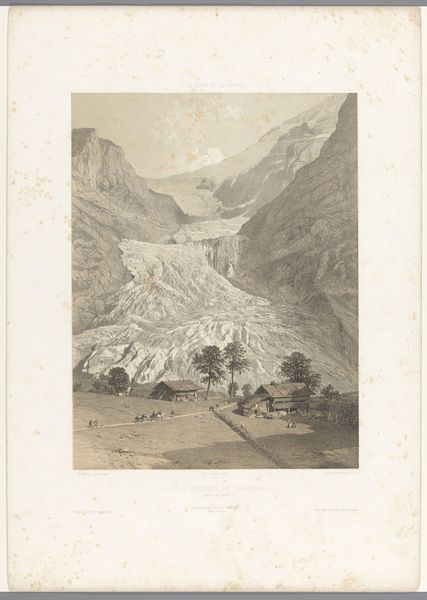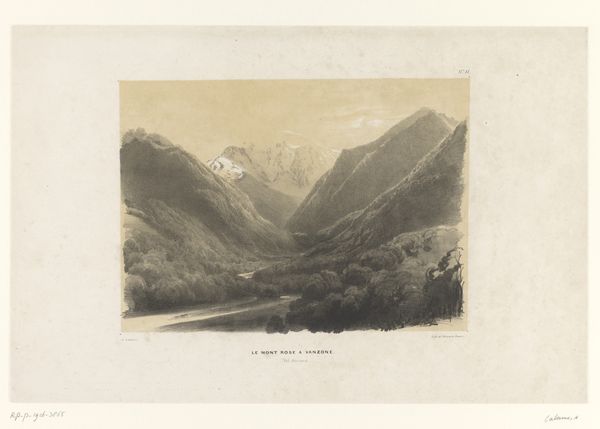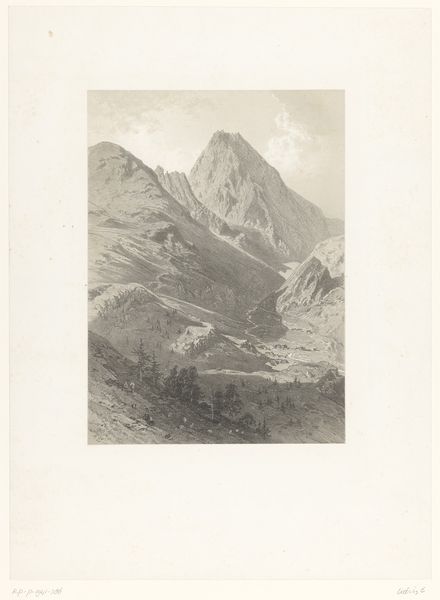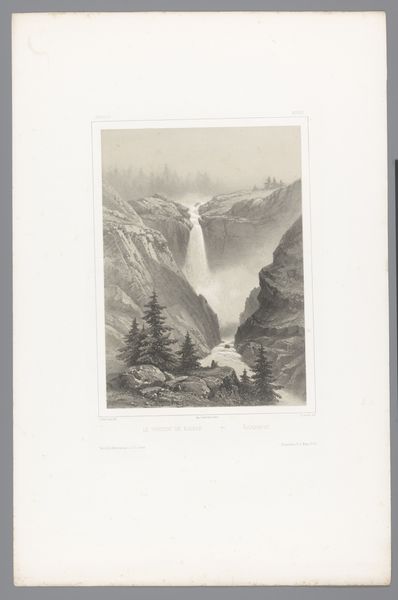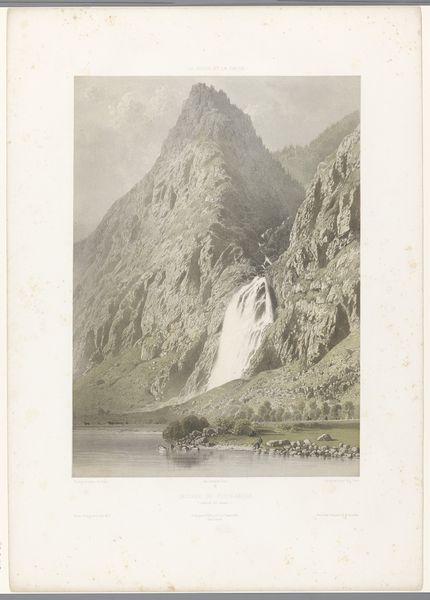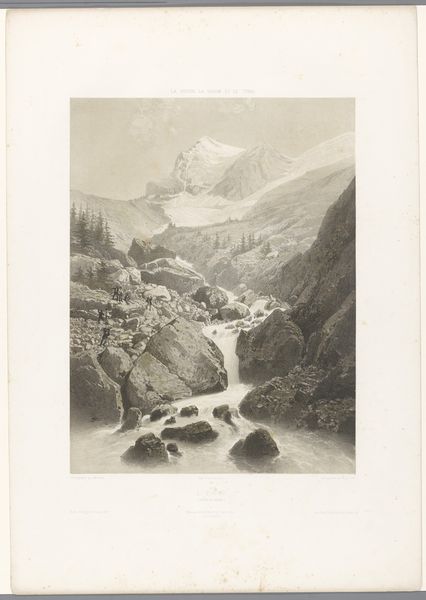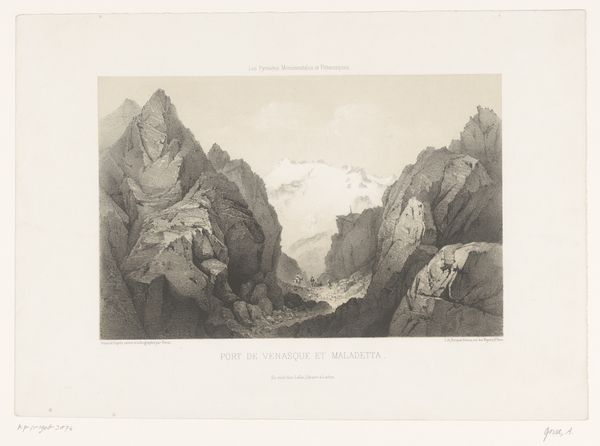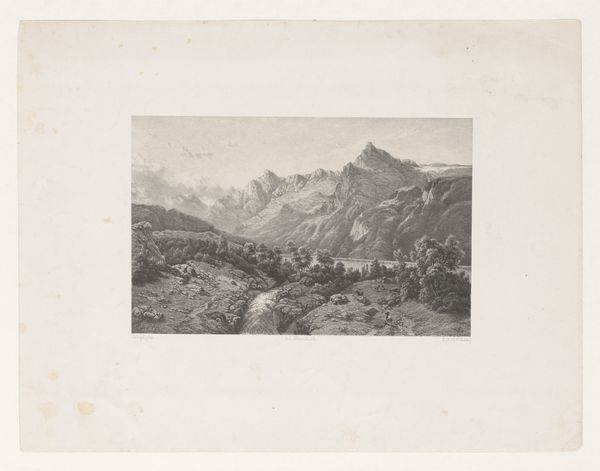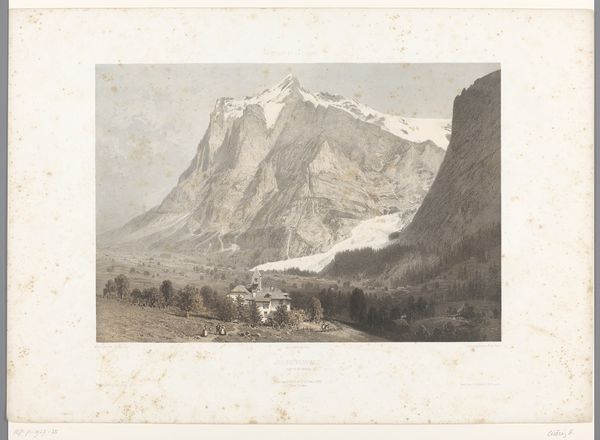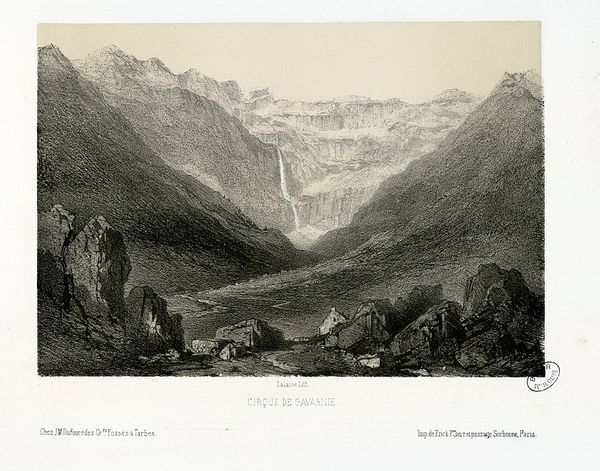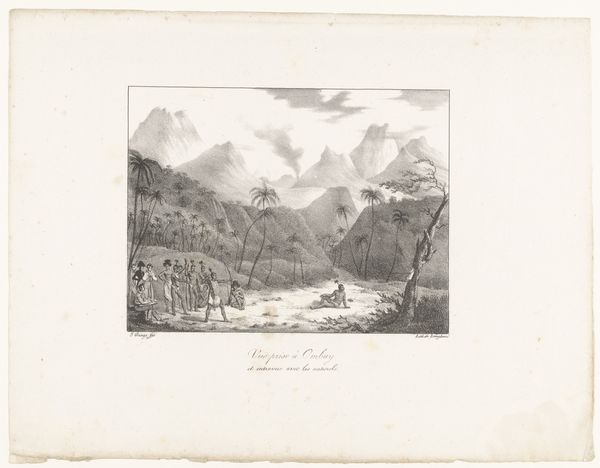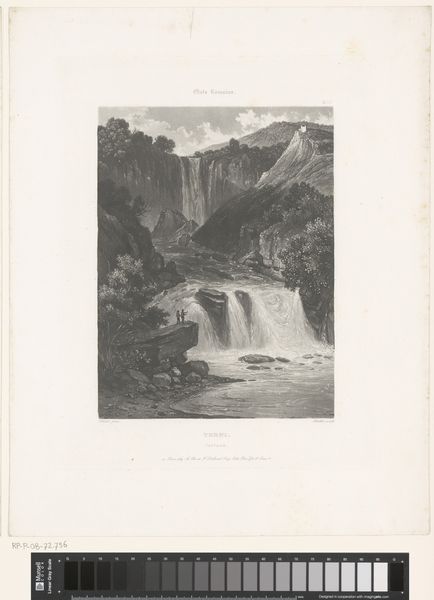
Dimensions: height 293 mm, width 405 mm
Copyright: Rijks Museum: Open Domain
Editor: This is "Zicht op de waterval van het Lac d'Oô", an engraving made in 1858 by Eugène Cicéri. It’s such a detailed landscape; I’m immediately struck by the small figures juxtaposed against the immensity of the mountains and the waterfall. What do you see in this piece? Curator: The iconography of the sublime is powerful here. Think about how often mountains and waterfalls are used as symbols of nature's overwhelming power. This image evokes a specific kind of awe, doesn’t it? Editor: Absolutely! I can almost feel that mixture of fear and respect. How does it connect to its time? Curator: Well, in the 19th century, Romanticism embraced these grandiose natural scenes as a counterpoint to industrialization. The engraving medium itself plays a role. What is its effect? Editor: Because of the engravings precise lines, it conveys both accuracy and the ethereal beauty, something hyper-real almost. Do the figures below represent something too? Curator: Yes. The figures become almost archetypal travelers, dwarfed by the setting, reminding us of humanity’s relative insignificance but also of our impulse to explore and witness such majestic vistas. They represent a journey, perhaps a spiritual quest, undertaken to find deeper meaning in the natural world. Consider the smoke coming from the dwelling on the hill. How might we read that as symbolic? Editor: Maybe a meeting point of the domestic within the untamed, of the known and the unknown? Thinking about it that way gives the image so much more depth. Thanks! Curator: Indeed! It reminds us how symbols evolve, and yet their resonance endures across time.
Comments
No comments
Be the first to comment and join the conversation on the ultimate creative platform.
